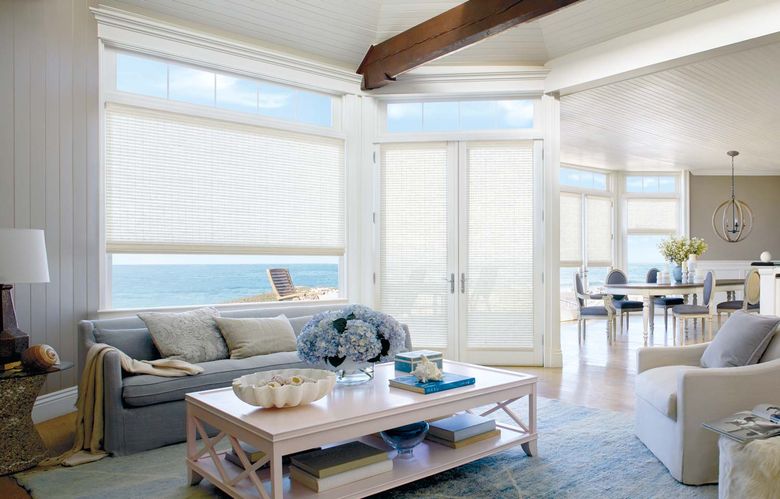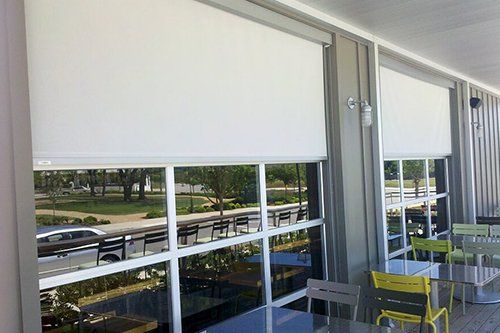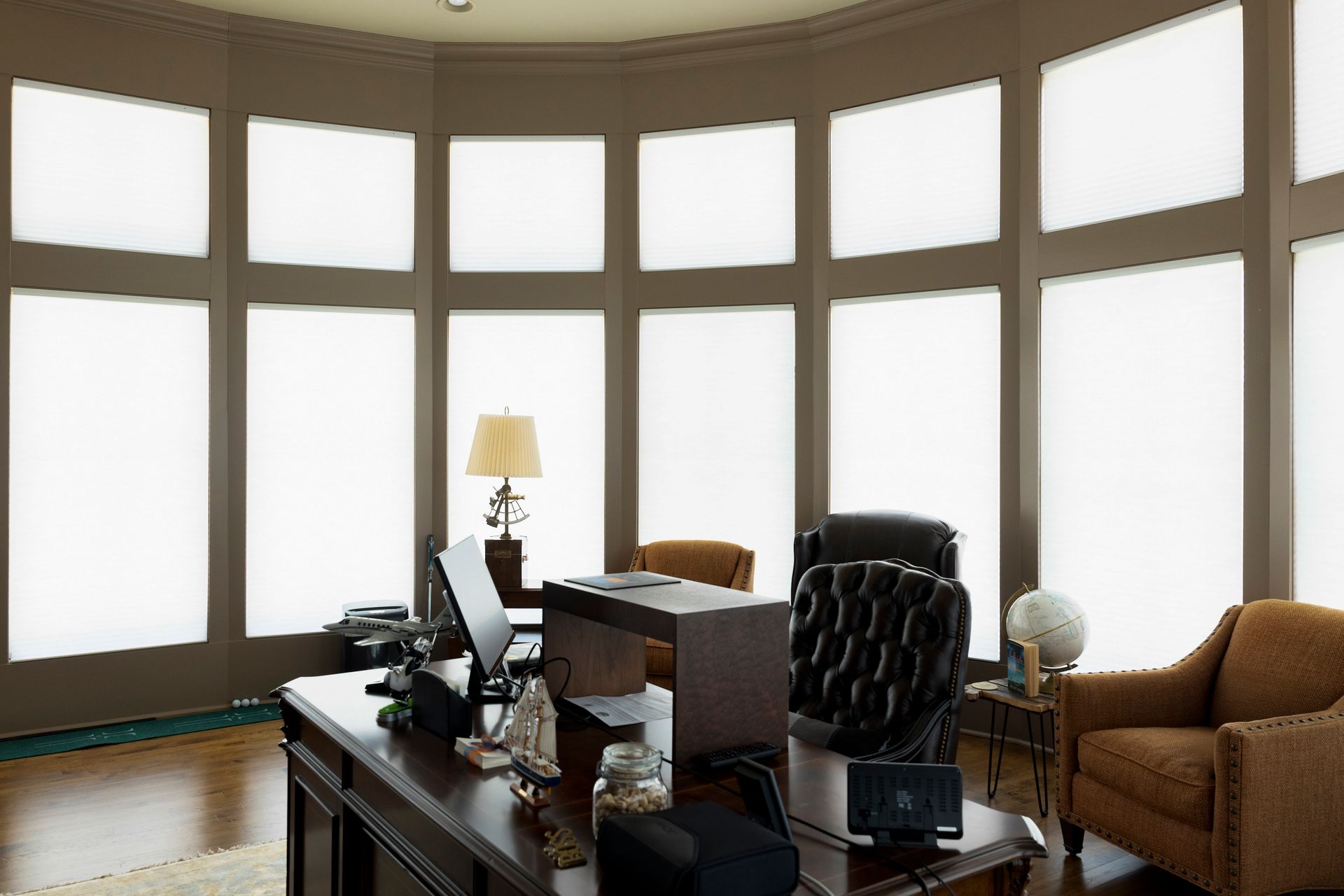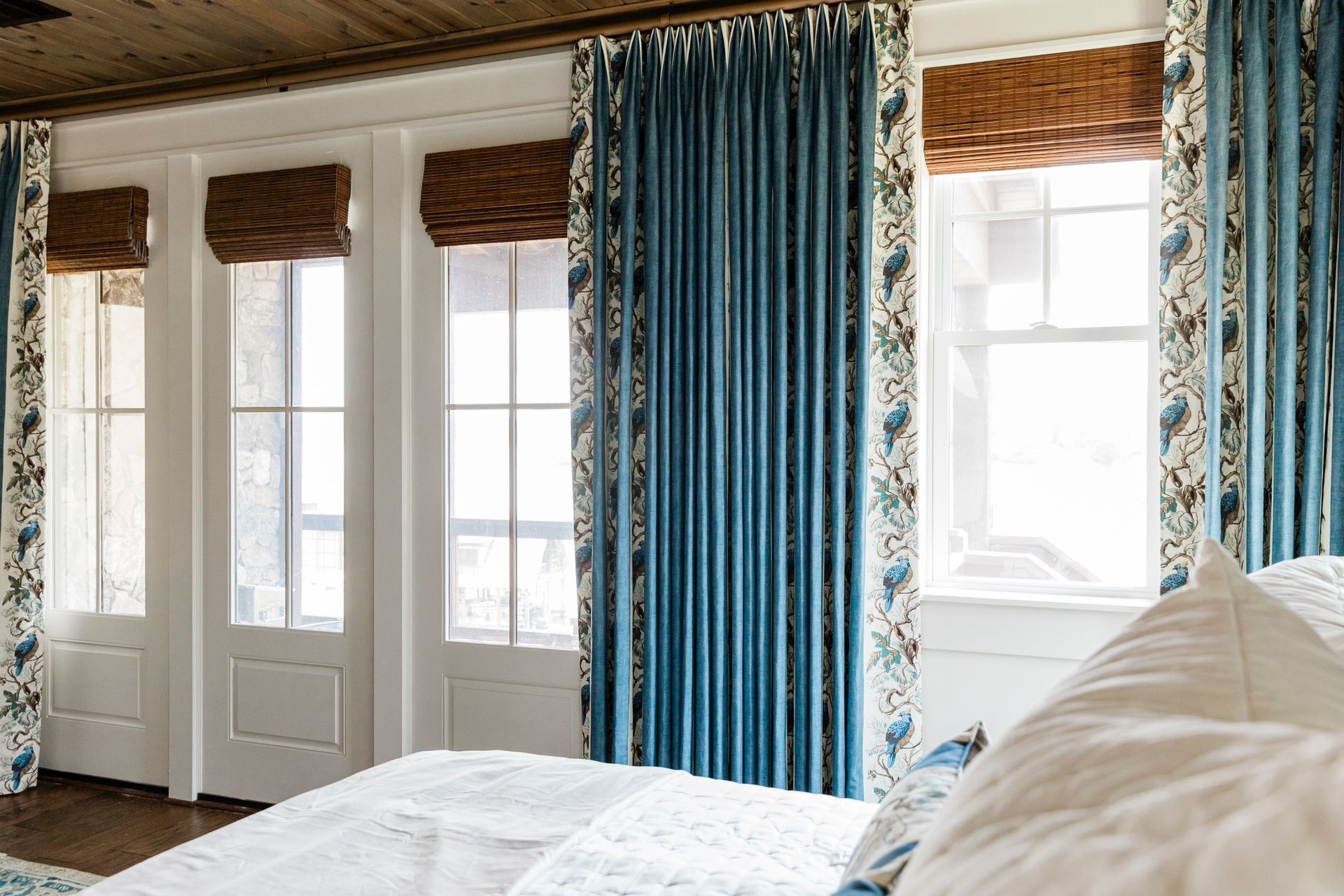June 18, 2025
When the mercury soars, never underestimate the power of blinds, shades, and other window treatments to keep your living space cool. With the techniques that follow, you can limit demand on your air conditioner, lower your energy bill, and maintain stunning aesthetics both inside and out. 1. Go For the Layered Look If you don't want blackout blinds that completely block out light and heat, consider layering your window treatments for the summer months. This is a great way to add depth and texture to your rooms while still maintaining a tight home envelope and limiting solar heat gains. Use wood or faux wood blinds to create a solid base layer. Then, add sheers and custom curtains to finish the look. Layering creates levels of flexibility and adaptability that single window treatments cannot match. You can close all three layers for maximum heat blocking, slant your blinds and close your sheers to let limited sunlight in, or open your drapes and your blinds and use your sheers for light filtering. 2. Beat the Heat With Outdoor Window Treatments Some of the best window treatments for blocking heat and light during the summer months belong on the outside of your home. If you haven't done so already, consider investing in shutters. Shutters can vastly improve the efficiency of your home while providing excellent UV ray protection. This will keep your flooring and furnishings from fading while offering a fair amount of skin protection. In addition to tightening home envelopes, shutters provide excellent noise reduction and offer added protection against the natural elements. With your shutters standing guard as your home's first defense, you'll still have one or more window treatments at the interior of the building during the next big heat wave. Outdoor Shades Work, Too If shutters aren't the right look for you, opt for lightweight, retractable shades. Installing outdoor shades gives you yet another way to safeguard your home from solar heat gains whenever temperatures spike. You can use outdoor shades with layered indoor window treatments to create an airtight space and reduce stress on your AC during the hottest portion of the day. Once the sun sets, you can easily draw them open. 3. Optimize Airflow According to the United States Environmental Protection Agency (EPA), indoor air can be up to five time more contaminated than outdoor air. Even though air conditioners and heat pumps filter the indoor air during operation, they don't extract volatile organic compounds (VOCs) or other gaseous chemical contaminants. When the sun's out and you're running your air conditioner non-stop, all the contaminants introduced into your home by off-gassing building materials, cooking, room freshening sprays, and chemical-laden self-care products and cleaners remain trapped indoors. Blinds are great for optimizing airflow. When the sun sets, the mercury dives, and a cool breeze rolls in, you can turn your blind slats upwards to reflect light from the setting sun and slightly crack your windows. This technique works well for giving ACs an early evening break. It's also an excellent strategy for improving indoor air quality (IAQ). As natural light decreases, you can open your blind slats wider and let more fresh, outdoor air flow in. This easy air exchange will get your home and your IAQ ready for the challenges of the next sweltering day. 4. Keep Indoor Moisture in Check With Shades With a high-functioning air conditioner or heat pump, you'll get reliable humidity regulation whenever your cooling system is on. The right shades can support this by keeping outdoor moisture outside and preventing the buildup of condensation on your windows. Cellular shades are made for high-moisture areas, and they're the perfect addition to any other southern home. You can get similar benefits from faux wood blinds, vinyl blinds, and aluminum blinds. Moisture-resistant blinds or shades are an essential upgrade if you currently have heavy fabric drapes or multiple layers of sheers. Some materials capture and retain moisture. They're also prone to problems like mold and mildew and can lower IAQ as a result. 5. Go Motorized Don't worry about dragging your ladder out to draw your outdoor shades or running through your home to manually adjust your blinds. Shop for motorized window treatments that you can open, close, and adjust with just the touch of a button. This way, as lighting and temperatures change, you can quickly adapt your window treatments to reflect your most current needs. At Just Blinds, we're all about comfort. We want your window treatments to look amazing, but believe that you should feel amazing too. We offer a fantastic selection of blinds, shutters, shades, and custom draperies to help our clients beat the heat in the summer months . Let us help you stay cool in style. To speak with our design consultants, contact Just Blinds today!













